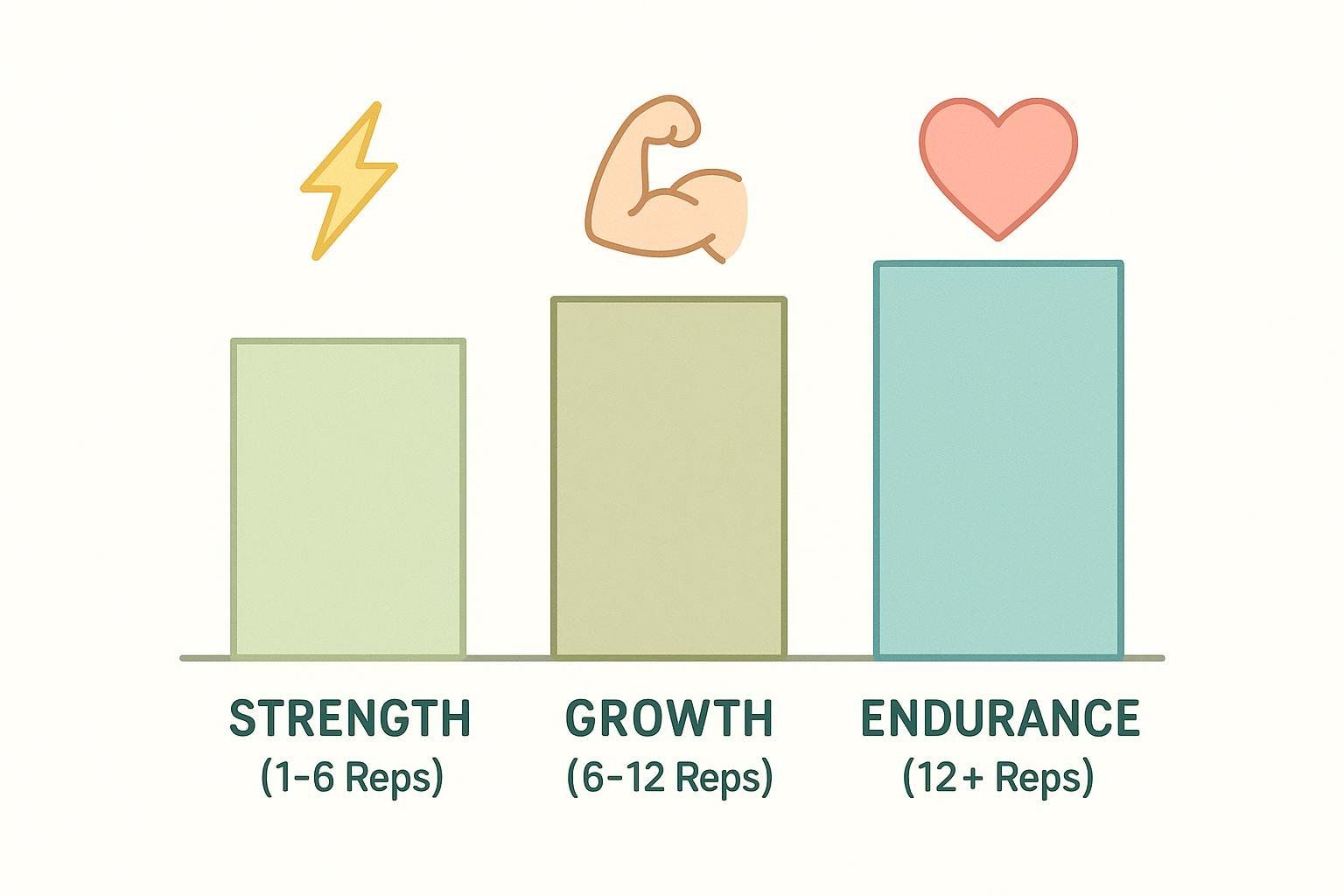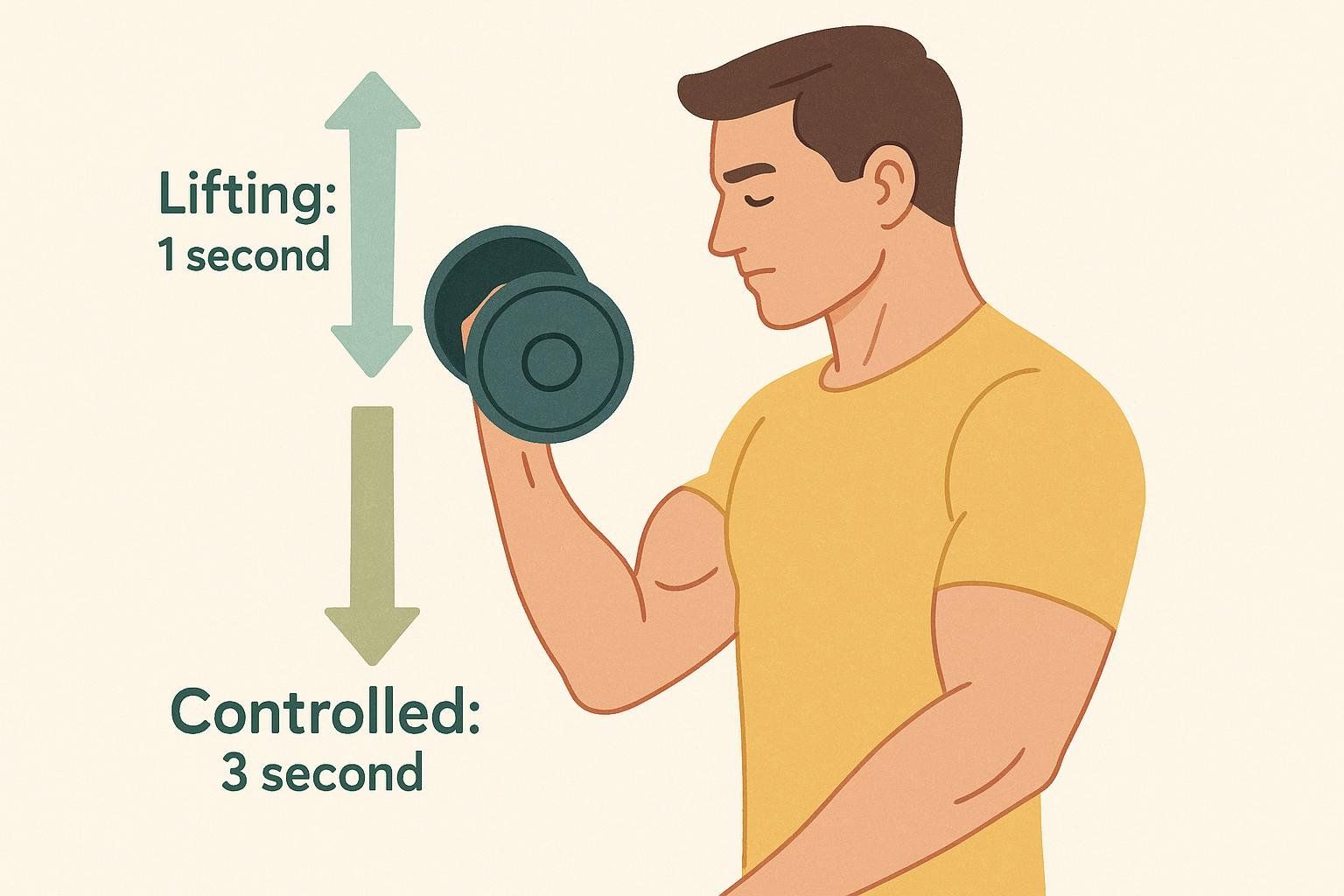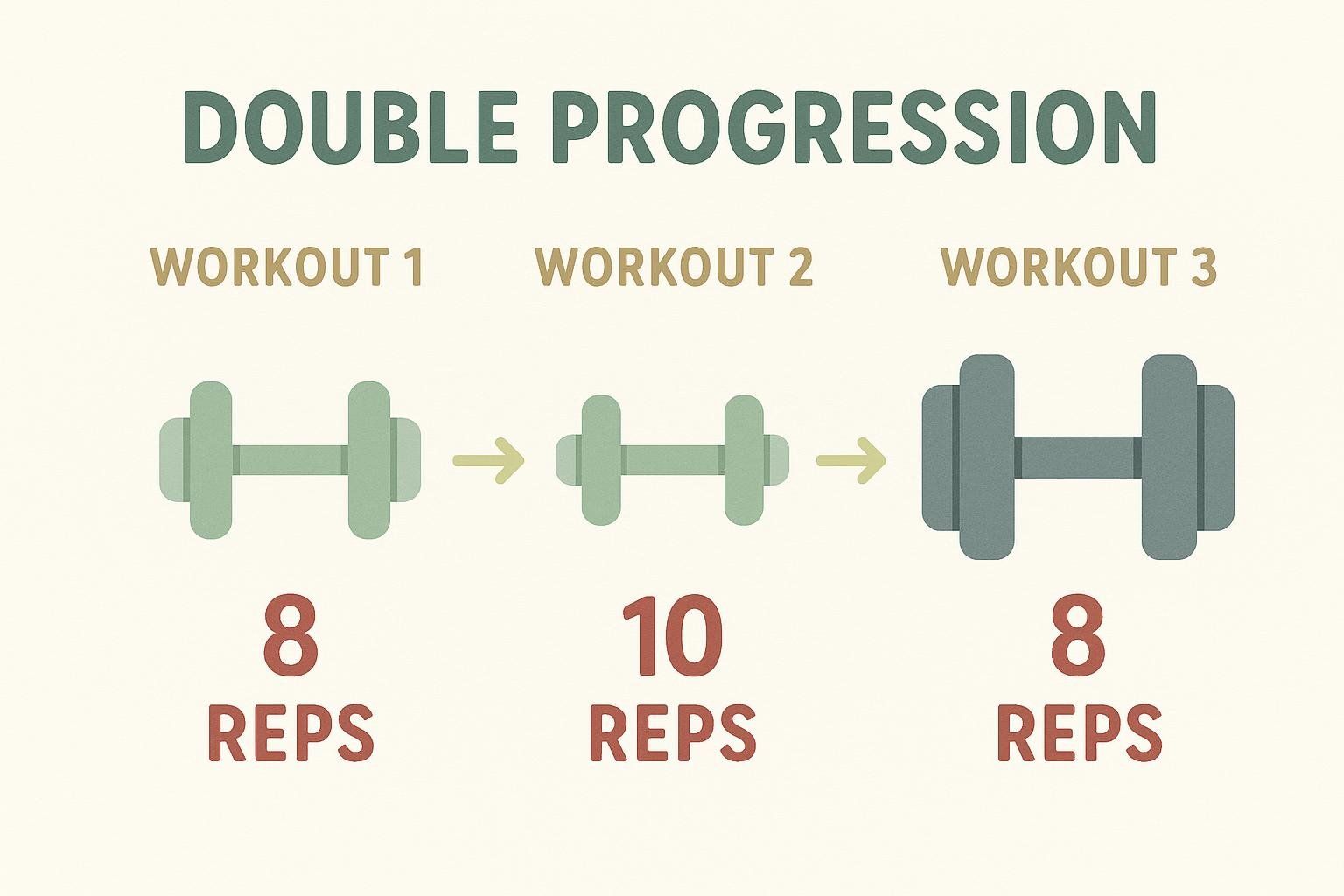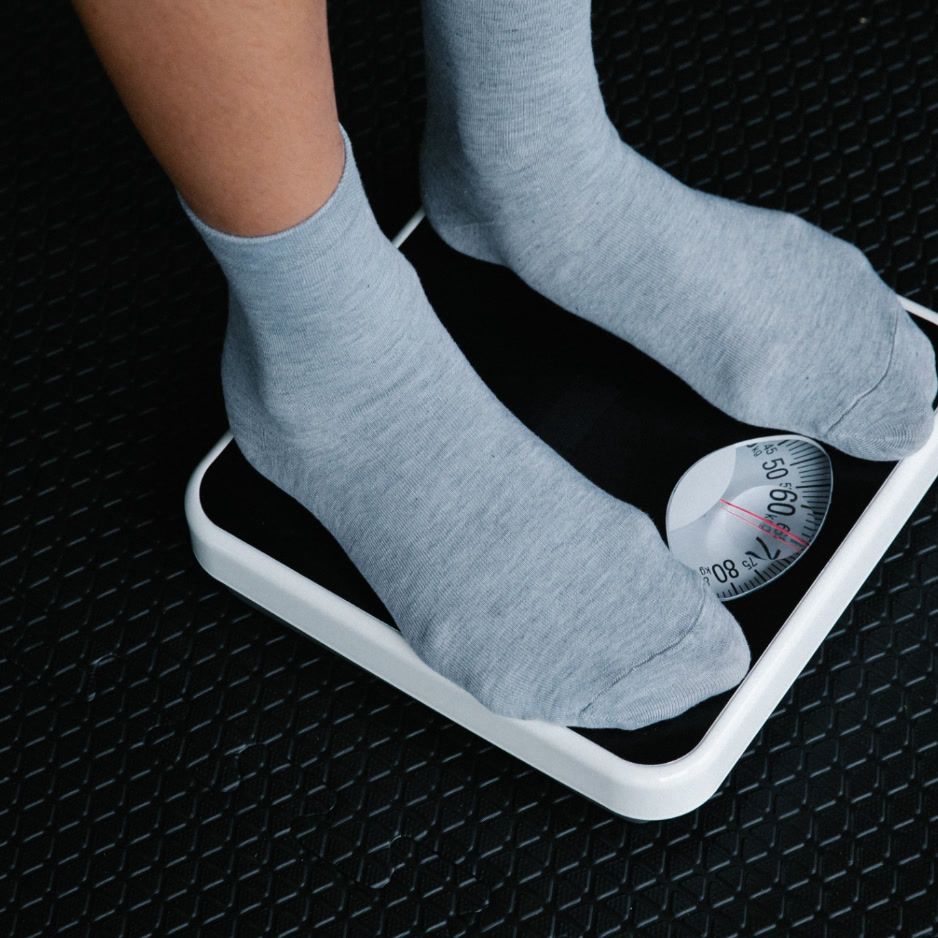What Are Reps: A Comprehensive Guide

What Are Reps? The Complete Beginner's Guide to Repetitions in Exercise
Ever walked into a gym and felt completely lost when someone mentioned "3 sets of 12 reps"? You're not alone! Understanding reps—short for repetitions—is your gateway to unlocking confident, effective workouts that actually deliver results.
Whether you're stepping into a gym for the first time, transitioning from group fitness classes to solo training, or getting back into exercise after years away, this comprehensive guide will explain the essentials of reps and show you how to use them strategically for your goals.
What Are Reps? The Foundation of Every Workout
A "rep" (repetition) is one complete movement of an exercise from start to finish. Think of it as the basic building block of any workout routine.
For example:
- One bicep curl = lifting the weight up and lowering it back down = 1 rep
- One push-up = going down to the floor and pushing back up = 1 rep
- One squat = sitting back and standing up = 1 rep
Understanding Reps vs. Sets: The Dynamic Duo
While we're defining terms, let's clarify the relationship between reps and sets, since they're always mentioned together:
- Rep (repetition): One complete exercise movement
- Set: A group of consecutive reps performed before taking a rest
So when your workout plan says "3 sets of 10 push-ups," you're doing:
- 10 push-ups in a row (that's 1 set of 10 reps)
- Rest for 30-60 seconds
- 10 more push-ups (that's your 2nd set)
- Rest again
- 10 final push-ups (that's your 3rd set)
In total, you have completed 30 push-ups across three sets.

The Science of Rep Ranges: Matching Reps to Your Goals

Understanding reps isn't just gym jargon—it's a critical tool for tailoring your workouts to achieve your specific fitness goals. Different rep ranges are used to achieve different outcomes:
Low Reps (1-6): Building Maximum Strength & Power
- Primary Goal: Maximum strength and power
- How It Works: Your nervous system learns to recruit more muscle fibers efficiently
- Best For: Building raw strength for daily tasks like lifting heavy boxes, improving overall athletic performance, and powerlifting
While this range excels at strength development, muscle growth can also occur when sets are performed close to failure.

Moderate Reps (6-12): For Muscle Growth (Hypertrophy)
- Primary Goal: Muscle growth (hypertrophy) and strength
- How It Works: Creates optimal muscle damage and metabolic stress for growth
- Best For: Building visible muscle mass and a toned appearance, improving body composition, and classic bodybuilding training
This range is effective for muscle growth, but studies show that muscle growth occurs across various rep ranges when training near failure (performing reps until you can no longer complete another one with good form).
High Reps (12+): Focusing on Muscular Endurance
- Primary Goal: Muscular endurance and conditioning
- How It Works: This improves the muscle's ability to use oxygen and resist fatigue, allowing you to perform activities for longer
- Best For: Circuit training, conditioning workouts, improving muscle stamina for sports and longer activities like hiking
This range can also produce muscle growth when performed to or near muscular failure, especially in beginners.

Quality Over Quantity: How to Perform a Quality Rep
Getting the most from your workouts isn't just about hitting target rep numbers—it's about ensuring each repetition contributes to your progress. To get the most out of every repetition, focus on these three elements:
Full Range of Motion: Complete the entire movement from start to finish. Moving through the complete range maximizes muscle activation and strength gains.
Examples of full range movement:
- For squats: Lower your hip crease below knee level then stand fully upright
- For push-ups: Lower your chest until it nearly touches the floor then push back to arms fully extended
- Avoid partial reps like half-squats or short push-ups
Controlled Tempo: The speed of each repetition is called "tempo." Focus on smooth, deliberate movement rather than rushing through reps.

A good starting point is a 1-2 second lifting phase and a slower 2-3 second lowering phase. Avoid bouncing or using momentum to help complete the movement—this robs your muscles of the work they need to grow stronger. Pause briefly at the top and bottom of each movement to eliminate momentum.
Proper Form: Maintain correct technique throughout the entire set. If your form begins to break down, it's time to end the set. Completing reps with improper technique is less effective and significantly increases your risk of injury. Prioritize perfect form over higher reps; it's always better to complete fewer reps with proper technique than more with poor form.
How to Structure Your Reps for Success
Now that you understand the "what" and "why" of reps, let's dive into the "how"—specifically, how to structure your workouts for maximum effectiveness.
Progressive Overload: The Secret to Continuous Improvement
Progressive overload is the fundamental principle that drives all fitness improvements. Simply put: to keep making progress, you must gradually increase the challenge over time.
A systematic way to apply this is the "Double Progression" method. First, you work within a set rep range (e.g., 8-10 reps). Over several workouts, focus on adding more reps until you can complete all sets at the top of the range. Once you achieve this, increase the weight for the next workout and start back at the bottom of the rep range.
Here's how to apply this method using bicep curls as an example:
Phase 1: Adding Reps
- Workout 1: 3 sets of 8 reps with 15-pound dumbbells
- Workout 2: 3 sets of 9 reps with 15-pound dumbbells
Phase 2: Adding Weight
- Workout 1: 3 sets of 10 reps with 15-pound dumbbells (Goal met!)
- Workout 2: 3 sets of 8 reps with 20-pound dumbbells (Weight increased, reps reset)
This cycle ensures you're always progressing while maintaining proper form and avoiding plateaus.

Sample Rep Schemes for Different Experience Levels
Complete Beginner (First 4-6 weeks)
- Sets: 2-3 per exercise
- Reps: 8-12 (focus on learning movement patterns)
- Rest: 60-90 seconds between sets
- Frequency: 2-3 full-body workouts per week
Intermediate (3+ months of consistent training)
- Sets: 3-4 per exercise
- Reps: 6-15 (vary based on goals)
- Rest: 60-120 seconds between sets
- Frequency: 3-4 workouts per week (can split muscle groups)
Advanced (1+ years of consistent training)
- Sets: 4-6 per exercise
- Reps: Strategically alternates between different rep ranges (e.g., low for strength, high for endurance)
- Rest: 90-180 seconds between sets
- Frequency: 4-6 specialized workouts per week
Common Questions and Troubleshooting
Even with a solid understanding of reps, you'll likely encounter some common scenarios. Here's how to navigate them:
What if I can't complete all my planned reps?
This is completely normal, especially when you're pushing yourself appropriately. Here's what to do:
-
If you fall short by 1-2 reps: This usually means you've chosen a challenging weight and are pushing yourself effectively. Make a note of the reps you completed and aim to match or beat it next time.
-
If you fall short by 3+ reps: The weight might be too heavy or you might be fatigued.
- Reduce the weight by about 5-10% for your next sets to ensure you can maintain good form
- Extend rest periods to 90-120 seconds
- Reassess your starting weight if this continues
-
If you're consistently falling short: Reassess your starting weight, ensure you're eating and sleeping adequately for recovery, and consider reducing training frequency temporarily.
What if the planned reps feel too easy?
A good rule of thumb: if you can complete two or more reps beyond your target with perfect form for two consecutive workouts, it's time to increase the challenge. You can do this by:
- Increasing the weight by 5-10% in your next workout
- Increasing your target rep count for the next workout
- Progressing to a more challenging exercise variation in your next session
How do reps differ for cardio vs. strength training?
Strength training uses reps as the primary measurement—discrete, countable movements designed to progressively overload your muscles. You typically perform 1-20 reps per set with increasing weight or difficulty.
Cardio activities are usually measured differently: by time (rowing for 20 minutes, holding a plank for 60 seconds) or distance (swimming laps, cycling miles). Some bodyweight cardio exercises like burpees or jumping jacks can still be counted in reps.
Circuit training combines both approaches, mixing rep-based strength exercises with time-based cardio activities in the same workout.
Your First Workout: Putting It All Together
Important: Before beginning any new exercise program, consult with a healthcare professional to ensure it's safe and appropriate for your individual health status and fitness level.
Understanding reps is just the beginning. Once cleared for exercise, you can use the following template as a starting point to discuss with a professional or adapt to your needs.
To select your starting weight, choose a weight where the last 1-2 reps of your first set feel challenging but you can still maintain perfect form. If in doubt, start lighter—you can always add weight during or after your workout.
Beginner Full-Body Workout (2-3x per week):

- Warm-up: 5-10 minutes light movement
- Squats: 3 sets of 8-12 reps
- Push-ups: 3 sets of 6-10 reps (use knees or incline if needed for good form)
- Dumbbell Rows: 3 sets of 8-12 reps
- Lunges: 3 sets of 6-8 per leg
- Plank: 3 sets of 20-30 seconds
- Cool-down: 5-10 minutes stretching
Rest: 60-90 seconds between sets
When to Increase Weight: Once you can complete all sets at the top of your rep range (e.g., 12 reps for squats) with good form for two consecutive workouts, increase the weight by 5-10% and start back at the lower end of the range (8 reps). This is the "Double Progression" method explained earlier.
For a complete plan, see our Strength Training for Beginners guide.
Measuring Your Progress: Beyond the Rep Count
While rep improvements show you're getting stronger, the scale doesn't tell the whole story. You might find yourself performing more reps with heavier weights and feeling stronger—but the scale hasn't moved much, or has even gone up slightly.
This is actually good news. What's likely happening is body recomposition: you're building dense muscle tissue while simultaneously losing less-dense fat tissue. Your body composition is improving by gaining muscle and reducing fat, even if your total weight stays similar.

DEXA scans provide the most accurate measurement of these changes, showing you exactly how much muscle you've gained and where you've lost fat—including dangerous visceral fat around organs that a scale could never measure.
Book your DEXA scan today to establish your baseline and see exactly how your new understanding of reps translates into real body composition improvements.
What's Next? Advancing Your Training
Once you've mastered the basics, you can advance your training by exploring The Ultimate Guide to Building Muscle Mass for advanced muscle-building strategies, checking out 30-Day Fitness Challenge Plans for structured progression programs, or working with a qualified personal trainer for individualized programming.
Conclusion: From Rep Rookie to Training Pro
Understanding reps transforms you from someone who's intimidated by fitness terminology into someone who can confidently design effective workouts and make consistent progress toward your goals.
Key Takeaways:
- Reps are simply complete movement cycles from start to finish—the building blocks of every exercise
- Different rep ranges serve different purposes—choose based on your goals (strength, muscle growth, or endurance)
- Focus on form first—perfect technique matters more than heavy weights or high rep counts
- Progressive overload drives improvement—gradually increase challenge over time by adding reps or weight
- Consistency beats perfection—showing up regularly and tracking progress matters more than perfect workouts
- Quality always trumps quantity—one proper rep is worth more than three sloppy ones
You now have the foundation to walk into any gym with confidence. Start with a single, well-executed rep, and build from there.


